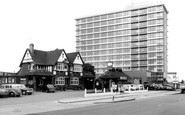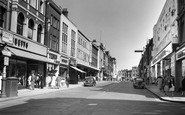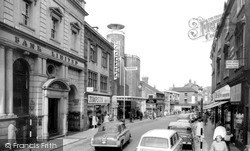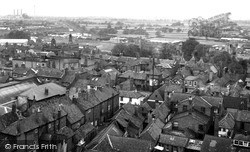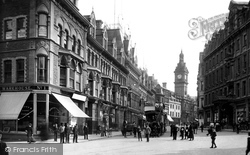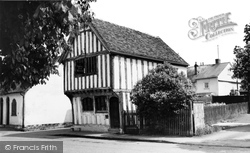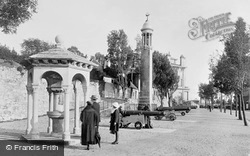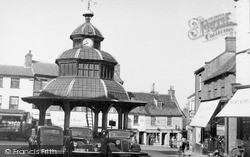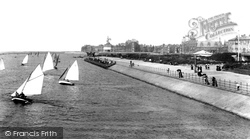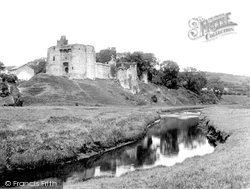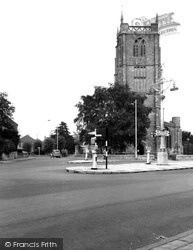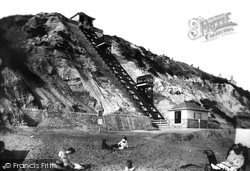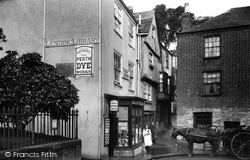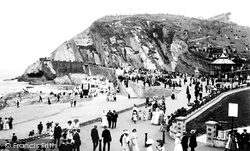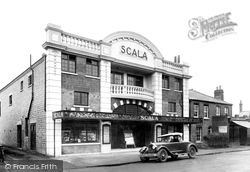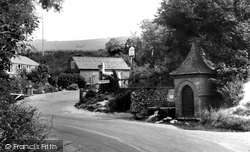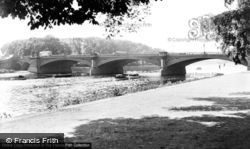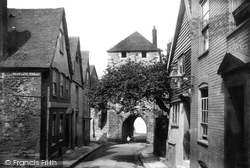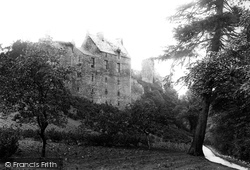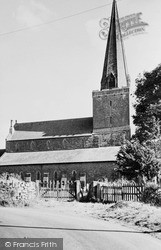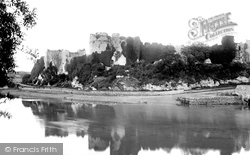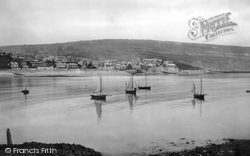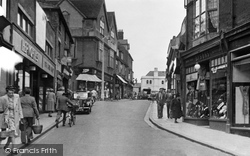Places
26 places found.
Those places high-lighted have photos. All locations may have maps, books and memories.
- Town End, Derbyshire
- Town End, Buckinghamshire
- Town's End, Somerset
- Towns End, Dorset
- Town End, Merseyside
- Town End, Cambridgeshire
- Town's End, Buckinghamshire
- West End Town, Northumberland
- Bolton Town End, Lancashire
- Kearby Town End, Yorkshire
- Town End, Cumbria (near Grange-Over-Sands)
- Town End, Cumbria (near Bowness-On-Windermere)
- Town End, Yorkshire (near Huddersfield)
- Town End, Yorkshire (near Wilberfoss)
- Town End, Cumbria (near Appleby-in-Westmorland)
- Town's End, Dorset (near Melbury Osmond)
- Town's End, Dorset (near Swanage)
- Town End, Cumbria (near Ambleside)
- Town End, Cumbria (near Lakeside)
- Town End, Cumbria (near Kirkby Lonsdale)
- Town End, Cumbria (near Ambleside)
- Town's End, Dorset (near Bere Regis)
- West-end Town, South Glamorgan
- Townend, Derbyshire
- Townend, Strathclyde (near Dumbarton)
- Townend, Staffordshire (near Stone)
Photos
23 photos found. Showing results 3,441 to 23.
Maps
195 maps found.
Books
3 books found. Showing results 4,129 to 3.
Memories
3,719 memories found. Showing results 1,721 to 1,730.
An Interlude In Buckfastleigh And Buckfast
I remember being a pupil at the little Buckfast school, now St Mary's primary. I presume it was the same then but can't remember. It was in the early to mid 1950s and I have a photo of what I think is a ...Read more
A memory of Buckfast by
The Woods And The 4am Hooter
My grandparents lived at "The Elms" a house built by my great grandfather who also build Fynnongroew Church - My grand mother Emily can be seen as a small girl in a Postcard of Fynnongroew out side "The Laurels" where she ...Read more
A memory of Tanlan in 1958 by
Summer Holidays
I've put 1980s down, but my memories of Rushden go back to the 1970s, my grandad ran the Works Dept in Newton Road for years and lived in the tied house attached to the Fire Station. I spent the whole of my summer holidays there in ...Read more
A memory of Rushden in 1982 by
Second World War Bombing
My father, Dr Joe Hampson, was the Gp in Gilfach in the late 1930s/early 1940s. He was Irish and born in Lucan just outside Dublin. He qualified from the College of Surgeons in 1932. He met my mother, Frances Pugsley, ...Read more
A memory of Gilfach Goch in 1940 by
Florries Stores
As a child my family moved from Leytonstone, London to Church Lane in South Benfleet. Memories are sketchey but I remember clearly living in what were called at the time a 'bungalow stores', it was a pre-war pebbledash type ...Read more
A memory of South Benfleet in 1967 by
Waggon And Horses
Sadly The Waggon and Horses has been demolished. Controversy surrounds the old water pump which was outside and which mysteriously disappeared. The Waggon was my local for many years. I brought up in Berwick Avenue ...Read more
A memory of Hayes by
Down St Mary School
Down St Mary School was built in 1878 on the site of the Bell Inn by the Rev. W T A Radford. In the 1930s I was a pupil in the infants' class which was divided from the upper class by a green curtain on a pole. There were ...Read more
A memory of Down St Mary in 1930 by
Woolwich, Powis Street
I remember Woolwich town centre in the 1960's when I was a kid. In this picture I believe you can just see Garrets department store on the left which was a big rival to Cuffs department store a bit further back (out of shot). ...Read more
A memory of Woolwich in 1962 by
Craigdarroch Cottage Eliock Sanquar
We lived in Craigdarroch Cottage, near Eliock Bridge, Sanquar, in the early 1960s while my dad, Wullie Wilson, worked on the farm there. At that time the farm was owned by the Kerr family. A black London-style taxi ...Read more
A memory of Eliock in 1963 by
As A Pupil At Stubbington House School
I was a boarder at Stubbington House School from 1954 to 1956. My father was a Naval officer, as were so many other fathers. I believe the school was sponsored by the Royal Navy, and I recall that a number ...Read more
A memory of Stubbington in 1954 by
Captions
5,054 captions found. Showing results 4,129 to 4,152.
The Midland Bank is prominent on the left, facing the National Westminster and Barclays, which was a few steps from Lloyds' palatial building opposite the Royal Hotel.
Newark grew up where the Roman road from Axminster to Lincoln met the medieval Great North Road's predecessor and crossed the River Trent.
These opposing views of the town centre illustrate the character and quality of life in Aspley Guise.
The Town Hall tower (centre right), designed by T M Lockwood and E A Landsdowne, was opened in 1885. It has since been demolished to make way for the British Home Stores.
Truly one of the finest small museums in Hertfordshire, Ashwell Village Museum was founded in November 1930 and is based on the collection of Albert Sheldrick and John Bray, made when they were schoolboys
Travelling aboard the 'Mayflower', the emi- grants had to put into Dartmouth and Plymouth following problems with the ship.
The town took the cross over and installed a chimney clock in 1899. The library on the square (right) boasts that it is 'the largest in East Anglia'.
It pumped sea water, which was used both in local water carts for street cleaning, and for flushing out the town's sewerage system.
The town is chiefly noteworthy for its noble old castle, the remains of which have been carefully strengthened so that the relic is the best preserved of the nine castles in Carmarthenshire.
St John's Church stands at the busy crossroads of the High Street and Station Road, which runs towards Fry's (now Cadbury's) chocolate factory at Somerdale.
The Victorian guide book writer J Burney Yeo complained that the new town had 'no esplanade or promenade' and found the burgeoning resort very dull in comparison with others.
The churchyard rails are on the left in this scene in the heart of the old town.
Before efficient transport links were opened to Ilfracombe, steamers crossed the Severn estuary from South Wales, discharging hundreds of day-trippers into the town.
The ornately designed building is a vivid reminder of the days, long before the television and video age, when every town in the country had a picture house, or 'flea pit' as they were sometimes known.
At Fulking, 16th-century cottages still lie on either side of the village street that winds its way below the South Downs.
This brief tour ignores the Georgian houses of High Pavement, the castle and the famous Lace Market area to descend to the River Trent.
Westgate, dating back to the 14th century, provides access to the south-west corner of the old walled town.
This small town once played host to one of the significant events in Scotland's history: John Balliol surrendered the realm of Scotland to Edward Longshanks here on 10 July 1296.
Mary of Guise was against it, as was the Catholic Church, and Arran not only changed sides but also faiths. The English invaded. Edinburgh fell, Holyrood was burnt.
The reason for this is that at one point in its history, Trelleck was arguably the second largest town in Wales; but by 1700 the population had shrunk considerably.
The fortifications of the castle once surrounded the entire town to protect it from attack. Pembroke was also an important port and quays can still be seen under its walls.
Nestling in a combe between two rocky hills, the tower of the parish church of St Michael is clearly visible in this view of the town, taken from the Cobb, on which the Duke of Monmouth landed on 11
Despite the fact that most of our towns and villages were founded in Saxon times, few have any reminders of their Saxonhistory left other than perhaps their names.
The fascias to Boots and beyond hide a range of early timber-framed buildings.
Places (26)
Photos (23)
Memories (3719)
Books (3)
Maps (195)



